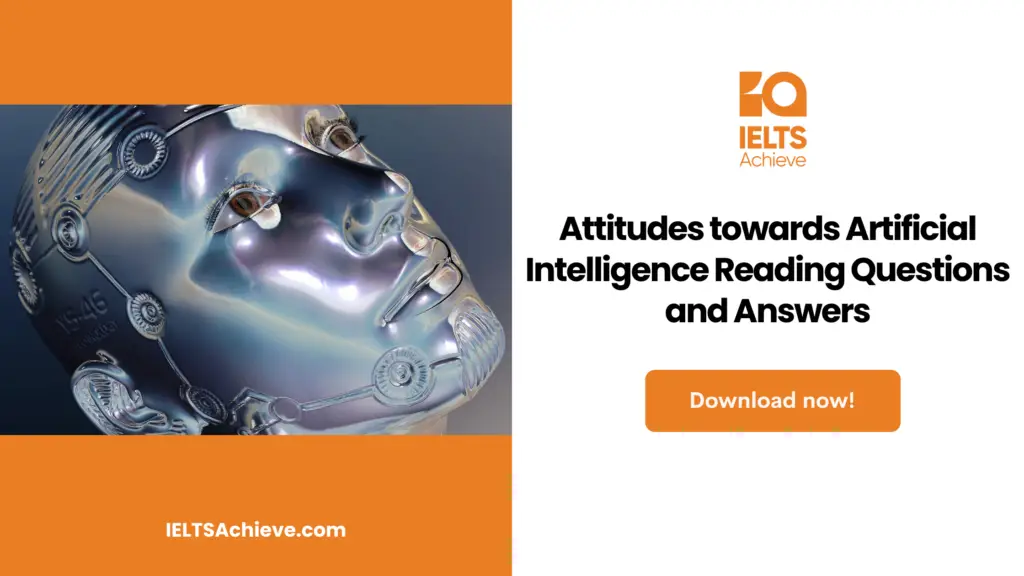The Blog post contains the following IELTS Reading Questions:
- IELTS Reading Sentence Completion
- IELTS Reading Matching Features
- IELTS Reading True/False/Not Given
Stay informed and prepared for success – Explore our comprehensive Reading Test Info page to get valuable insights, exam format details, and expert tips for mastering the IELTS Reading section.
IELTS Reading Passage – In Search Of The Holy Grail

In Search Of The Holy Grail
It has been referred to as the modern biological Holy Grail. It is the most expensive scientific endeavour since the Apollo programme that sent a man on the moon, costing over £2 billion. And because it won’t be finished until the early next century, it will take longer to complete than the lunar missions. According to those involved, even before it is finished, this effort should lead to new insights into and solutions for many of the diseases that plague humanity. The Human Genome Project will give people new hope that they can be freed from the grip of diseases like cancer, heart disease, autoimmune conditions like rheumatoid arthritis, and some psychiatric conditions.
The Human Genome Project’s ambitious goal is to map and analyse every gene found in the double helix of human DNA. This goal is straightforward to state but audacious in scale. Not the bones, muscles, and sinews, but the entire genetic code for a human being will be revealed by the initiative, creating a new human anatomy. The new genetic anatomy, according to some involved in the Human Genome Project, will revolutionise medicine and lessen human suffering in the twenty-first century. Others, though, have a more pessimistic view of the future and worry that the effort could usher in a world populated by Frankenstein’s monsters and disfigured by new eugenics.
A baby’s later growth is heavily influenced by the genetic inheritance it inherits from its parents at the time of conception, which affects traits as diverse as whether it will have blue eyes or have a life-threatening condition like cystic fibrosis. These inherited genetic instructions are all collected in the human genome. The chemical letters of the genetic language are written out along the double helix of DNA; it is a very long text because the human genome contains more than 3 billion letters:
It would take up roughly 7,000 printed pages. However, in a little more than ten years, every letter’s location as well as how it relates to its neighbours will have been discovered, examined, and documented. Given the enormous number of letters in the human genome, nature is a superb proofreader. But mistakes do happen occasionally. The most frequent genetic ailment among Caucasians is cystic fibrosis, which can be caused by a mistake in a single gene. The most prevalent single gene illness in the world, thalassaemia, is caused by errors in the genetic design for haemoglobin, the protein that gives blood its distinctive red colour and transports oxygen from the lungs to the rest parts of the body. There are known to be more than 4,000 single-gene defects that affect people. Most of them result in death, and most of the fatalities are youngsters.
Since the flaw is pre-programmed into every cell of the patient’s body, none of the single-gene disorders are diseases in the traditional sense for which it would be conceivable to provide a curative medication. But there is a chance for advancement. American scientists discovered the genetic error causing one kind of muscular dystrophy in 1986. A group of biologists from the United States and Canada reported in 1989 that they had discovered the location of the gene that, when faulty, causes cystic fibrosis. In fact, they had not only found the gene but also examined the letter order inside it to determine the error that caused the illness. These scientific developments may at the very least provide a means of identifying parents who might be at danger of passing a single-gene defect to any children they conceive. The parents will be relieved of concern and tension knowing that they will birth a baby free from the disorder if the foetuses are screened while in the pregnancy and found to be free of the genetic flaw.
The idea that the strategies used to correctly decipher disorder-related genes could be applied to a more important project, how to spell “human” genetically—became popular in the scientific community in the middle of the 1980s. The Human Genome Project soon gained support for its goal of “sequencing” (or writing out all the letters in the right order) the complete genome.
The Human Genome Project’s consequences, however, stretch far beyond a restricted focus on disease. Some of its backers have made extravagant claims, claiming that the Project will help us comprehend what it implies to be a person at its most fundamental level. However, many people worry that putting too much stress on humanity’s genetic makeup could skew our perception of what is morally just and cause us to forget that human life is more than just the manifestation of a genetic blueprint encoded in the DNA chemistry.
The Human Genome Project’s newfound information, if properly put to use, might rid the world of the devastating burden of many diseases. However, if the new information is not put to good use, it also carries the risk of generating fresh kinds of oppression and discrimination. Numerous traits, including height and intellect, are the consequence of complex interactions between genes and the environment rather than just the activity of the genes alone. What would happen if humanity was able to pinpoint the genetic makeup that, given the same environment, predisposes one person to having a higher level of intelligence than another person whose genes were scrambled differently?
A century ago, the unrelenting curiosity of scientists revealed forces of nature in the strength of the atom, whose mastery has changed the fate of nations and cast a shadow over all of our lives. We may eventually be able to change our genetic heritage if we so want thanks to the Human Genome Project. The main moral issue, however, is how to guarantee that we make morally sound decisions. that such a possibility is a promise rather than a danger? To grasp the threat, all we have to do is look to the past.
Unlock your full potential in the IELTS Reading section – Visit our IELTS Reading Practice Question Answer page now!
Recommended Questions:
Renewable Energy IELTS Reading Question with Answer
Questions 27-31
Complete the sentences below with words taken from Reading Passage.
Use NO MORE THAN THREE WORDS OR A NUMBER for each answer.
Write your answers in boxes 1-5 on your answer sheet.
Example : The paragraph contrasts the DNA’s genetic code to Answer: CHEMICAL LETTERS
27. The Project’s possible completion date is __________.
28. The passage contrasts the Project’s scale to that of _______.
29. A genetic problem cannot be treated with drugs because it is not a ________.
30. For writing human genome on a paper ________ books are required.
31. The second success of genetic defect research was determining the cause of _________.
Enhance your sentence completion skills in the IELTS Reading section. Click here to access our comprehensive guide and learn effective strategies for filling in missing words or phrases in sentences.
Questions 32-38
Write the appropriate letters A-D in boxes 7-12 on your answer sheet.
- The writer reported on the worries of others over the Project.
- The writer’s worries regarding the Human Genome Project.
- The writer’s description of the Project’s long-term ambitions
- The facts regarding the Project as reported by the writer.
32. All the elements which make up the DNA are to be studied and recorded.
33. The Project will contribute to a new understanding of major diseases.
34. Genetic monsters might be produced.
35. All genetic data in all DNA will be mapped in the correct order and inter-relationship.
36. Parents will no longer worry about giving birth to defective offspring.
37. Being ‘human’ might be defined solely in terms of physically definable characteristics.
38. People may face discrimination in new ways.
Improve your performance in Matching Features questions by clicking here to access our comprehensive guide. Learn how to match specific features or characteristics with the options provided in the IELTS Reading section.
Questions 39-40
Do the following statements agree with the information given in the Reading Passage? In boxes 13-14 on your answer sheet, write
TRUE if the statement is true
FALSE if the statement is false
NOT GIVEN if the information is not given in passage
39. The genetic inheritance that a child receives from its parents has a significant impact on the child’s development in later years.
40. The Human Genome project will raise the living standards of the people and benefit the countries economy.
Enhance your skills in identifying information as True, False, or Not Given. Click here to discover expert strategies and techniques for mastering this question type in the IELTS Reading section.
Unlock your full potential in the IELTS Reading section – Visit our IELTS Reading Practice Question Answer page now!
Recommended Questions:
Renewable Energy IELTS Reading Question with Answer
Answers
27.(EARLY) NEXT CENTURY
28. APOLLO PROGRAMME
29. DISEASE
30. 7000
31. CYSTIC FIBROSIS
32. D
33. C
34. B
35. D
36. C
37. A
38. B
39. TRUE
40. NOT GIVEN

We hope you found this post useful in helping you to study for the IELTS Test. If you have any questions please let us know in the comments below or on the Facebook page.
The best way to keep up to date with posts like this is to like us on Facebook, then follow us on Instagram and Pinterest. If you need help preparing for the IELTS Test, join the IELTS Achieve Academy and see how we can assist you to achieve your desired band score. We offer an essay correction service, mock exams and online courses.

